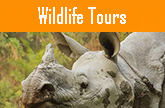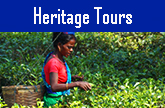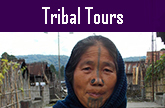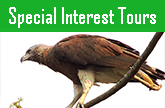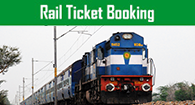Mishmi Hills Birding Tour
Duration : 17 Nights / 18 Days
Travel Season : November to April
mishmi hills birding tour itinerary:
Day 01: Arrive Guwahati
Meet upon arrival at Guwahati Airport / Railway Station and take transfer to hotel.
Guwahati:
Guwahati, 'the city of Eastern light' stands on the southern bank of the mighty river Brahmaputra. It is the capital city of Assam and the gateway to the entire north-eastern states. Modern Guwahati is the hub city of Assam. It fulfills every aspect of a metropolitan city with its advanced means of transport, communication and media, as a major center of business activity, educational institutions, and various administrative and political activities of entire Assam. Besides, its landscape surrounded by hills and the mighty Brahmaputra River, rich and diverse flora and fauna enhances its natural scenic beauty.
In the afternoon, visit -
Kamakhya Temple:
Kamakhya Temple, one of the greatest 'Shaktipeeth', the shakti shrine of Goddess Kamakhya is situated on the Nilachal Hills. It is the oldest center of Tantric Shaktism. A famous legend regarding the birth of the Kamakhya temple narrates that Lord Shiva, rage with anger at his wife Sati's death, wandered the entire earth carrying Sati's corpse. An organ of Sati fell here and eventually the place became a temple of worship in due course of time. The temple features various stone inscriptions, terracotta works, sculptures and idols of Ganesha and Chamundeswari which are worth mentioning. The famous 'Ambubachi Fair' is celebrated with great enthusiasm every year in mid-June in this temple and devotees from different parts of India throng into it for the special occasion.
Umananda Temple:
It is a legendary temple of Lord Shiva built by Ahom King Gadadhar Singha in 1664 AD. The temple is standing in an island hill in the middle of great Brahmaputra River. The temple possesses rock-cut figures and sculptures of God Surya, Ganesha, Shiva and Vishnu along with his ten incarnations. The temple is a major centre for the celebration of Shivaratri. The easiest means of transport to this temple is country boat or engine boat which is an added attraction to the tourists.
Overnight: Stay in hotel.
Day 02: Guwahati - Manas National Park (176 kms, 3 & 1/2 hrs drive)
In the morning after breakfast, take transfer to Manas National Park. En-route visit -
Barpeta:
Barpeta is renowned to be the home of various Satras (monasteries), temples, mosques, shrines, rivers and the Gateway to Manas National Park. Acclaimed for its natural beauty and religious significance, Barpeta is also widely famous for its cultural and traditional crafts like pottery, wooden crafts, masks, gold ornaments and ivory carvings. Sarthebari is the home of household bell and brass-metal industry.
Barpeta Satra:
Barpeta Satra (monastery) was established by great Vaishnavite saint Shri Shri Madhav Dev, the disciple of Srimanta Shankar Dev. The reflection of religious and cultural tradition of Barpeta Satra is very ancient and unique. Madhav Dev stayed for 8 long years and produced his best literature here. Barpeta Satra encompasses a large area with an entrance gate known as 'Batsora'. Prayers or 'Naam Kirtan' are held in the prayer hall named 'Kirtan Ghar'. The Satra owned some other important wings which are not found in other satras of Assam. Those are Jagmohan Ghar, Daul Ghar, Paat Chang, Saaj Ghar, Bhaaj Ghar and the Math. These structures are beautiful and are used in different purposes of the satras. Devotees gather in large numbers during the anniversaries of Vaishnava Gurus and Doul festival.
Later, depart to Manas National Park.
Manas National Park:
Manas National Park, a UNESCO World Natural Heritage Site, is situated on the foothills of the Himalayas in the district of Barpeta. It is a famous Tiger Reserve of Assam. It encompasses an area of 519.77 sq km and is a home to many rare and endangered species of flora and fauna. It's rich bio-diversity and wealthy wildlife enhances the scenic beauty and glory of this park. Around 550 varieties of plant species identifies the rich flora of Manas National Park. It is a homeland to 60 species of mammals, 435 species of birds (10 species are globally threatened), 42 species of reptiles and amphibians, 54 species of fishes and 103 species of invertebrates.
Manas National Park is an ideal habitat to rare species such as One Horned Rhinoceros, Asian Elephant, Royal Bengal Tiger, Pygmy Hog, Hispid hare, Golden Langur, Bengal Florican, Gaur, Assam Roofed Turtle and Rat Snake. Leopard, Clouded Leopard, Himalayan Bear, Wild Boar, Sambar, Swamp Deer, Hog Deer are the common inhabitants of this park. Hundreds of migratory birds like Riverchats (White Capped Redstars) Forktails, Cormorants and Ruddy Shelduck visit this park during the winter season.
Click in the link to view Clements Check-list of birds (6th edition, updated in 2014) found in Manas National Park ->
Manas National Park Birds' Check-list
Arrive at Manas and check-in jungle cottage. Overnight: Stay in jungle cottage.
Day 03: Manas National Park
Elephant Safari:
In the early morning, enjoy an elephant ride in the Bansbari range of Manas National Park.
Jeep Safari:
After breakfast, enjoy one round of full day jeep safari in Manas National Park covering Bansbari and Mothanguri ranges of the National Park.
Evening: Free at relaxation. Overnight: Stay in jungle cottage.
Day 04: Manas National Park - Nameri National Park (270 kms, 6 hrs 30 mins drive)
In the morning after breakfast, take transfer to Nameri National Park.
Nameri National Park:
Nameri National Park is situated in the foothills of Eastern Himalayas and covers an area of about 200 sq km, stretching along both banks of the Jia Bhoroli River in the district of Sonitpur. The park is identified with its rich diversity of flora and fauna. It consists of semi-evergreen vegetation, moist deciduous forests and open grasslands along with about 600 species of flora.
It is the famous resident place for Asian Elephants. It is also a homeland to Royal Bengal Tiger, Leopard, Clouded Leopard, Indian Bison, Gaur, Wild Boar, Sloth Bear, Himalayan Black Bear, Capped Langur, Indian Giant Squirrel, Pygmy Hog, Indian Wild Dog and Civet Cat. Various beautiful birds like White Winged Wood Duck, Great Pied Hornbill, Wreathed Hornbill, Black Stork, Ibis Bill, Blue-bearded Bee Eaters, Babblers, Plovers, Rufous Necked Hornbill etc. are also found here.
Click in the link to view Clements Check-list of birds (6th edition, updated in 2014) found in Nameri National Park ->
Nameri National Park Birds' Check-list
Arrive at Nameri and check-in jungle cottage.
Evening: Free at leisure to explore the nature by your own. Overnight: Stay in jungle cottage.
Day 05: Nameri National Park
Trekking:
In the early morning, enjoy a full day guided trekking inside the dense forest of Nameri National Park along with an armed forest guard.
Evening: Free at relaxation. Overnight: Stay in jungle cottage.
Day 06: Nameri National Park - Kaziranga National Park (117 kms, 3 hrs drive)
In the morning after breakfast, take transfer to Kaziranga National Park. En-route visit -
Tezpur:
Tezpur, the 'city of love' is situated on the northern bank of the Brahmaputra River. The ancient name of Tezpur was Sonitpur, the kingdom of the mighty legendary king, Baan Raja. It was the capital city under his reign. Tezpur holds in its heart many ancient historical events, and witnessed many legends and mythological wars of ancient Assam. The occurrence of a famous war named 'Hari-Hara' is related with the attainment of the present day Tezpur. This battle led to the bloodshed of so many soldiers that the entire place was stained with blood and hence the city came to be known as Tezpur ('Tez' meaning blood and 'pur' meaning city in Assamese language). Present day Tezpur was founded by the British colonial administration in 1835 as the headquarters of Darrang district.
At Tezpur, visit -
Agnigarh:
Legend speaks of Agnigarh as a fortress built by Baan Raja in order to keep his daughter in isolation. The word 'Agnigarh' is a derivation of two Sanskrit words: 'Agni' meaning 'fire' and 'garh' meaning 'fort'. Situated on the north bank of the Brahmaputra River, it maintains its gracefulness with its lush green landscapes of the river. Nowadays, magnificent works of sculpture are depicted referring to the love story of Usha-Aniruddha and Great War 'Hari-Hara Juddha'.
Mahavoirab Temple:
Mahavoirab temple is the oldest Shiva shrine, where the second biggest Shiva linga of the world is worshipped. The temple was built by King Baan, the ruler of Sonitpur in 10th century. King Baan's daughter Princess Usha was a devotee of Lord Shiva and visited the temple for daily worship. Thousands of devotees gather during Shivaratri every year to offer prayers in this temple.
Later, depart to Kaziranga National Park.
Kaziranga National Park:
Internationally popular forest reserve and a UNESCO World Natural Heritage Site, Kaziranga National Park is situated on the northern banks of the mighty river Brahmaputra, spreading wide on both the Golaghat and Nagaon districts of Assam. It covers an area of over 430 sq km. Its landscape is characterized by swamps, beels, tall elephant grass, flat grasslands with streams.
Kaziranga National Park supports a variety of flora and fauna. It is mainly the undistributed residence of the Great One horned Rhinoceros. It is also a home to a large population of Indian Elephant, Wild Water Buffalo, Swamp Deer, Indian Boson, Royal Bengal Tiger, Sloth Bear, Hog Deer, Leopard Cats, Otter, Hog Badger, Capped Langur, Hollock Gibbons, Wild Boar, Jackal, Pythons, Monitor Lizard, and Fishing Cat etc. Small mammals like the rare Hispid Hare, Indian Gray Mangoose, Large Indian Civet, Small Indian Civet, Bengal Fox, Golden Jackal, Chinese Pangolin, Indian Pangolin, Hog Badger, Chinese Ferret Badger, Parti-colored Flying Squirrels etc. are also found here.
More than 500 species of birds have been recorded in Kaziranga National Park including 26 species of globally threatened category. Migratory birds like Lesser White Fronted Goose, Ferruginous Duck, Baer's Pochard Duck and Lesser Adjutant, Greater Adjutant, Black Necked Stork, Asian Openbill Stork etc. migrate to this park during the winter season every year. It is also a habitat of threatened species like Blyth's Kingfisher, White Bellied Heron, Dalmatian Pelican, Spot-billed Pelican, Nordmann's Greenshank, Black-Bellied Tern and other birds like the Eastern Imperial Eagle, Palla's Fish Eagle, Grey Headed Fish Eagle, Lesser Kestrel, Indian Vulture, Slender billed Vulture, Indian White-rumped Vulture, Swamp Francolin, Bengal Florican, Pale- Capped Pigeon, Black Breasted Parrotbill and Rufous vented Prinia etc. It is also a home to the endangered Gangetic Dolphin. Besides there are more than 40 species of fishes and 42 species of reptiles are found in Kaziranga National Park.
Click in the link to view Clements Check-list of birds (6th edition, updated in 2014) found in Kaziranga ->
Kaziranga National Park Birds' Check-list
Jeep Safari:
After reaching Kaziranga , enjoy one round of Jeep safari in the western range (Bagori) of Kaziranga National Park.
After completing jeep safari, check-in jungle resort.
Evening: Free at leisure. Overnight: Stay in jungle resort.
Day 07: Kaziranga National Park
Elephant Safari:
In the early morning, enjoy an elephant ride in the western range (Bagori) / central range (Kohora) of Kaziranga National Park.
In the late morning after breakfast, take a visit to the Ethnic Village of Kajir Ronghangpi Aklam, Kohora and explore the way of living of North Eastern People. Have a glimpse of Assam tea plantation. Observe the teams of colorfully dressed tea garden female workers plucking the delicate buds and leaves with their nimble fingers. Also, visit the company outlet of Hathikuli Tea Estate for purchasing different kinds of organic Tea.
Later visit -
Kaziranga National Orchid and Bio-diversity Park:
Witness more than 500 varieties of wild orchids collected from different parts of North-East Indian states, 132 species of sour fruits and leafy vegetables, 12 species of cane, 46 species of bamboo and a large variety of local fishes in Kaziranga National Orchid and Bio-diversity Park, located in Durgapur.
Also visit - Souvenir shops of bamboo and wooden products near Orchid Park at Kaziranga.
Jeep Safari:
In the afternoon post lunch, enjoy one round of Jeep safari in the central range (Kohora) of Kaziranga National Park.
If interested, visit in the evening - Kaziranga Orchid Park again to enjoy special cultural show of different folk dances of Assam.
Overnight: Stay jungle resort.
Day 08: Kaziranga National Park
Trekking:
In the morning after breakfast, enjoy guided trekking inside the dense Kukurkata reserved forest under Burhapahar range of Kaziranga National Park along with an armed forest guard.
Jeep Safari:
In the afternoon post lunch, enjoy one round of Jeep safari in the eastern range (Agaratoli) of Kaziranga National Park.
Overnight: Stay in jungle resort.
Day 09: Kaziranga National Park - Gibbon Wildlife Sanctuary (135 kms, 3 hrs 15 mins drive)
In the morning after breakfast, take transfer to Jorhat.
Jorhat:
Jorhat is known as one of the leading towns of Assam and the centre of tea industry. The earlier Jorhat town was sought to ruins as a result of the Burmese invasions in 1817 AD. But as the British ventured into Assam in 1824 AD, these invasions were cleared out under the British administrative officers, David Scott and Captain Richard. Present day Jorhat is the hometown of the world famous Tocklai Tea Research Center, Assam Agricultural University, North-East Institute of Science & Technology and the head office of Assam Sahitya Sabha. There are about 140 Tea Gardens in and around Jorhat.
Visit at Jorhat -
Tea Factory:
Visit the tea factory of Gatoonga Tea Estate and witness processing of Assam CTC tea.
After lunch, take transfer to Gibbon Wildlife Sanctuary.
Gibbon Wildlife Sanctuary:
Gibbon Wildlife Sanctuary is an isolated protected area of evergreen forest located at Jorhat district of Assam. It comprises an area of 20.98 sq kilometers. Earlier Gibbon Wildlife Sanctuary was identified as Holongapar Forest. Later, the reserved forest was renamed as Gibbon since it is a home to India’s only Gibbons – the Hoolock Gibbons. It is also an ideal habitat of North-East India’s only nocturnal primate – the Bengal Slow Ioris. It is the only wildlife sanctuary in North-East India which harbours seven out of nine species of non human primates – Hollock Gibbon, Indian Slow Ioris, Capped Langur, Rhesus Macaque, Assamese Macaque, Pigtailed Macaque and Stump tailed Macaque. Other important mammals found here are Asian Elephant, Wild Boar, Leopard, Leopard Cat, Jungle Cat, Indian Fox, Civet Cat, Chinese Pangolin, Squirrel etc. A wide variety of Lizards, Python, Cobra and Turtles are found in the sanctuary. Important birds recorded here are Hornbill, Green Pigeon, Owl, Woodpecker, Dove, Bulbul, Black headed Oriole, Drongo, Barbet, Egret etc.
Arrive near Gibbon Wildlife Sanctuary and check-in jungle cottage.
Evening: Free at relaxation. Overnight: Stay in jungle cottage.
Day 10: Gibbon Wildlife Sanctuary – Dibrugarh (140 kms, 3 hrs drive)
Trekking:
In the early morning, enjoy guided trekking inside the dense forest of Gibbon Wildlife Sanctuary along with an armed forest guard.
Later after breakfast, take transfer to Dibrugarh. En-route visit –
Sibsagar:
Literally, the name ‘Sibsagar’ means ‘Ocean of Lord Shiva’. This historical city of Assam remained the capital seat of the mighty Ahoms who ruled over Assam for nearly 600 years till the arrival of the British. It reflects the glory of ancient Assam under the Ahom rule. The Ahom monarchs started the tradition of building royal palaces, tanks, roads, forts, temples, towns, embankments, bridges of stones and bricks all over the kingdom. Apart from representing a number of monuments of rare historical and archaeological significance, modern Sibsagar has grown as a fast developing town with leading oil and tea producing areas.
In Sibsagar, visit -
Shiva Dole:
This famous Shiva temple was built by the second queen of Shiva Singha, Queen Ambika in 1734 AD. It is reputed to be the tallest Shiva Temple in India with a height of 180 feet and 195 feet in diameter caped by seven feet height golden dome.
Sibsagar Tank (Barpukhuri):
The famous Sibsagar tank was dug in 1734 AD by Queen Ambika, the second queen of King Shiva Singha to honor the memory of her husband. The tank covers an area of 129 acres of land. The water level of the tank remains always above the level of the town and never changes. Due to its big size and depth, it is regarded as ‘Sagar’ meaning ‘sea’.
Rang Ghar:
Rang Ghar is a historic amphitheatre constructed during the rule of Ahom king Pramatta Singha in 1746AD. During those times, Rang Ghar acted as a royal pavilion where the Ahom royalties and officers witnessed several outdoor games such as wrestling, buffalo-fight, falconry, elephant fights and other sporting and cultural events. It is an antique oval-shaped two storied building. The ground floor is rectangular in shape with two trapezoidal ends. Due to its typical and special structure, it has become a symbol of modern Assam.
Tolatol Ghar:
Tolatol Ghar was originally constructed by Ahom King Rudra Singha in 1699AD. Several changes and additions were made by the later Ahom rulers and this palace got its present structure of bricks and indigenous type of cement during 1751-1769AD under Ahom king Rajeshwar Singha. It is a seven storied palace of which four stories are above ground and the remaining three stories are underground with two underground tunnels, one leading to Dikhow River and the other to Gorgaon palace at Nazira. It was also once the capital and military station of the Ahom kings.
Kareng Ghar (Gargaon Palace):
Kareng Ghar was constructed by the Ahom king Suklengmung in 1540 AD. Initially, the original structure of this palace was made of wood and stone. Later, a brick wall of about five kilometers surrounding the palace and masomory gate was built by King Parramatta Singha in 1747 AD. The palace got its present structure of brick palace of seven stories during the reign of King Rajeshwar Singha in 1752 AD.
Later, drive to Dibrugarh.
Dibrugarh:
The 'Tea City of India', Dibrugarh is located in the eastern part of Assam. It is situated on the banks of the river Brahmaputra in upper Assam. Main attraction is mainly tea gardens along with oil and natural gas reserves. There are more than 165 tea gardens in and around Dibrugarh district. The foothills region of Dibrugarh is composed of lateritic soils, which is suitable for the production of tea plants. Besides, Dibrugarh city is the main educational centre of Upper Assam with important educational institutions like Dibrugarh University, Assam Medical College, Kanoi College, Salt Brook Academy etc.
Arrive Dibrugarh and check-in hotel.
Overnight: Stay in hotel.
Day 11: Dibrugarh - Dibru-Saikhowa National Park (93 kms, 2 hrs drive), return to Tinsukia (43 kms, 1 hr drive)
In the early morning, take transfer to Dibru-Saikhowa National Park.
Dibru-Saikhowa National Park:
Dibru-Saikhowa National Park is a famous bio-sphere reserve encompassing an area of about 340 sq km. One part of the area is wet land and the rest part comprises of grasslands, canebrakes and dense forests. Bounded by the Brahmaputra and Lohit rivers in the North and Dibru River in the South, this park is a homeland to more than 250 varieties of endemic, endangered and migratory birds. Its main attractions are semi-wild Horse and White Winged Wood Duck. It is also a habitat to mammals like Asian Elephant, Leopard, Clouded Leopard, Sambar, Slow Loris, Indian Wild Water Buffalo, Capped Langur, Gangetic River Dolphin, Indian Wild Dog etc.
Click in the link to view Clements Check-list of birds (6th edition, updated in 2014) found in Dibru-Saikhowa National Park ->
Dibru-Saikhowa National Park Birds' Check-list
Arrive at Dibru-Saikhowa National Park premises.
Boat ride:
Enjoy a country boat ride in Dibru River for two hours.
Trekking:
Enjoy guided sightseeing of wildlife and birdlife during trekking in Dibru-Saikhowa National Park along with an armed forest guard.
Later, return to Tinsukia.
Tinsukia:
Arrive Tinsukia and check-in hotel.
Overnight: Stay in hotel.
Day 12: Tinsukia - Roing (105 kms, 3 hrs drive)
In the morning after breakfast, take transfer to Roing. En-route cross - Brahmaputra River through Bhupen Hazarika Setu (Dhola-Sadiya Bridge), India's longest bridge above water which is 9.15 kms long.
Roing:
Set amidst lush green trees and snow-capped mountains, Roing lies on the bank of river Dibang at an altitude of 3000 feet. A district headquarter of Lower Dibang Valley, Roing is acclaimed to be the only town dominated by the Idu Mishimi and Adi tribes.
Arrive at Roing and check-in hotel / guest house. Later visit -
Idu Mishmi Tribal Village:
Evening: Free at relaxation. Overnight: Stay in hotel / guest house.
Day 13: Roing
Trekking:
In the morning after breakfast, move on trail for guided bird watching in and around Chidu Kebali Road and Sally Lake.
Click in the link to view Clements Check-list of birds (6th edition, updated in 2014) found in Mishimi Hills ->
Mishimi Hills Birds' Check-list
Chidu Kebali Road:
Sally Lake:
Sally Lake is a natural lake resort surrounded by luxuriant green forest located at a serene atmosphere in the mountainous terrain of Mishimi hill. The picturesque view of the lake with different fish species seen in its clean water attracts the tourists of all age groups.
Overnight: Stay in hotel / guest house.
Day 14: Roing - Mayudiya (56 kms, 1 hr 30 mins drive)
In the morning after breakfast, take transfer to Mayudiya. Enjoy guided bird watching on the way.
En-route cross - Sikang River through Dibang River Bridge (Sikang River Bridge), India's second longest bridge above water which is 6.2 kms long.
Mayudiya:
Mayudiya, situated at an altitude of 8700 feet above sea level, is a tourists’ hotspot nestled in snow-capped mountains, picturesque valley and green breath-taking landscapes. This magnificent hill resort receives snowfall every year from December to March adding exquisite beauty by covering the area with thick carpets of snow. Mayudiya serves as a gateway to the Indo-China border. It is an ideal holiday destination for adventure seekers, trekkers and bird watchers across the planet since various endangered avifauna species are recorded here including Tragopan.
Arrive at Mayudiya and check-in hotel / guest house.
Evening: Free at leisure. Overnight: Stay in hotel / guest house.
Day 15: Mayodiya Pass
Trekking:
In the early morning after breakfast, go for trekking in and around Mayudiya Pass. Enjoy guided bird watching for whole day long.
Mayudiya Pass:
Located at an 8800 feet above sea level
Overnight: Stay in hotel / guest house.
Day 16: Mayudiya – Hunli (34 kms, 1 hr drive)
In the morning after breakfast move on to explore Hunli. Enjoy guided bird watching on the way downhill stretch from Hunli to the Ithun river bridge.
Hunli:
Hunli, a sub-divisional headquarter of Lower Dibang Valley district, is situated at an altitude of 5000 feet above sea level. It is a flat picturesque valley offering eye catching natural beauty of lush green tropical evergreen broadleaved forests and hilly terrain. It is a renowned birding area among global tourists.
Return to Mayudiya. Overnight: Stay in hotel / guest house.
Day 17: Mayudiya - Dibrugarh (165 kms, 4 hrs drive)
In the morning after breakfast, take transfer to Dibrugarh. Enroute cross - the Brahmaputra River through Bhupen Hazarika Setu (Dhola-Sadiya Bridge).
Arrive Dibrugarh and check-in hotel. In the afternoon, if time permits, visit -
Jokai Botanical Garden:
Jokai Botanical Garden cum Germ-plasm Center, located in Jokai Reserve forest covers an area of 12 hectares. Recognized as one of the remaining rain forest situated in North Eastern provinces, it showcases rich floral bio-diversity of the region. The botanical garden has a stock room where germplasm (a collection of genetic resources for an organism) of some vulnerable floral species are collected. Jokai Reserved Forest is a protected bio-diversity tropical rain forest to which migratory birds flock from different parts of the world every year.
En route - Have a glimpse of Mancotta Tea Garden to observe the tea plantation. Observe the teams of colorfully dressed tea garden female workers plucking the delicate buds and leaves with their nimble fingers.
Haaj-Paar:
It is a small weaving centre located at Chiring Chapori, an urban locality of Dibrugarh. Here traditional mekhela chadars are woven in variety of designs by employed women and is run privately. They also weave sarees from both ‘muga’ and ‘paat’ silk unique to Assam. The products made in the centre are available for sale.
Overnight: Stay in hotel.
Day 18: Dibrugarh departure
In the morning after breakfast, take transfer to Dibrugarh Airport / Railway Station for your onward destination.
Tour terminates here
North East India Tourism
Important Note:
Due to arid winter from mid December to first week of March, the minimal growth of tea leaves results in declination of plucking activity in the Tea Estates of Assam every year. That's why, processing of tea leaves in the manufacturing units cannot be demonstrated to the visitors in its real sense. Besides, tea factories also remain close every Monday.
Package Inclusions:
# All ground transportation by a dedicated and exclusive vehicle driven by our experienced and friendly driver
Package Exclusions:
# Any air fare or train fare









